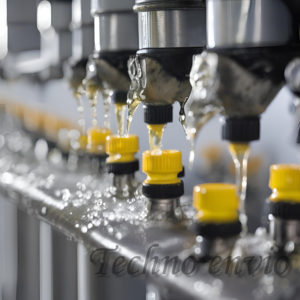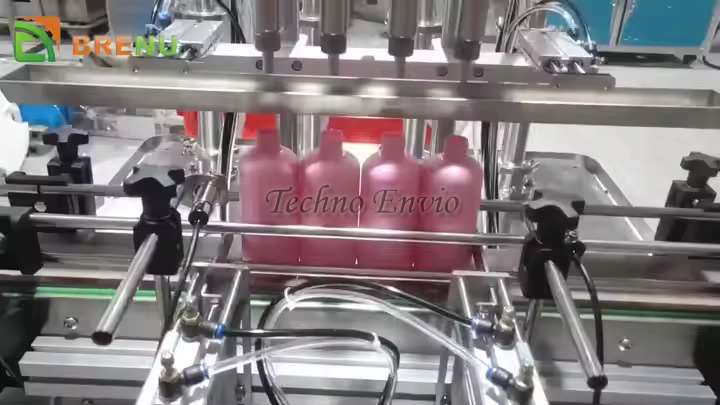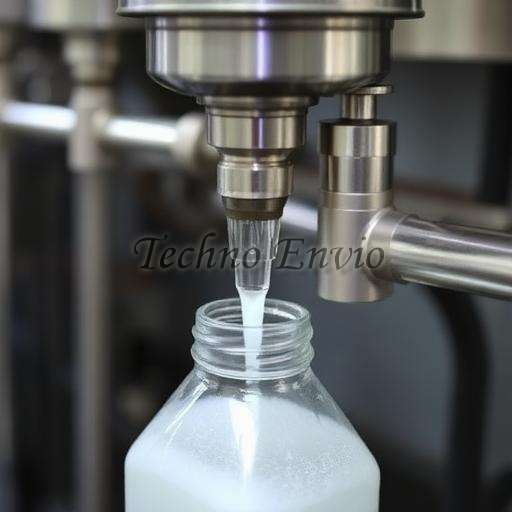Common Problems in Filling Machines and How to Fix Them
Filling machines are essential in various industries, from food and beverage to cosmetics, pharmaceuticals, and chemicals. While these machines streamline the filling process, they’re not immune to issues. Understanding common problems in filling machines and how to fix them can reduce downtime, improve efficiency, and maintain high product quality. Here’s an in-depth look at typical filling machine issues and practical solutions for each.
1. Inconsistent Fill Levels
One of the most common issues in filling machines is inconsistent fill levels, where the volume of product varies between containers. This problem can result from a variety of factors, including air bubbles, nozzle clogs, and variations in product viscosity.
Possible Causes and Fixes:
- Nozzle Blockage: Check for clogs in the nozzle caused by residue buildup. Clean nozzles regularly, especially when handling thick or sticky products.
- Incorrect Calibration: Ensure the machine is calibrated correctly. Adjust the fill time or flow rate if needed to match the specific product’s viscosity.
- Air in the Product Line: Air bubbles in the product line can cause uneven fills. Bleed the line to remove trapped air, or install air eliminators for continuous air removal.

2. Dripping Nozzles
Dripping nozzles can cause product waste, reduce efficiency, and lead to unsightly containers. This issue is particularly common in products that cling to the nozzle, such as oils or syrups.

Possible Causes and Fixes:
- Worn Seals: Check the seals around the nozzle for wear and tear. Replacing worn seals can often solve the issue.
- Anti-Drip Nozzles: Consider using anti-drip or shut-off nozzles if your product tends to drip after filling. These nozzles prevent product from leaking once filling is complete.
- Adjust the Flow Rate: Lowering the flow rate may prevent dripping, especially with thinner liquids.

3. Foaming in Filling Line
Foaming can be problematic, particularly when filling carbonated or foamy products like beer, soft drinks, or cleaning solutions. Excessive foam can cause spills, fill inconsistencies, and contamination risks.
Possible Causes and Fixes:
- High Fill Speed: Reducing the fill speed can minimize foam formation. Many machines allow adjustable flow rates, which can help to reduce foaming.
- Anti-Foam Nozzles: Use nozzles specifically designed for foamy products, which control the flow to minimize foam.
- Product Temperature Control: Ensure the product is at an optimal temperature, as warmer products tend to foam more. Chilling the product before filling can often reduce foaming.

4. Inconsistent Filling Speed
Inconsistent filling speeds can lead to inefficiencies and delayed production schedules. Variations in fill speed are often related to machine calibration, mechanical wear, or power supply fluctuations.

Possible Causes and Fixes:
- Mechanical Wear and Tear: Over time, mechanical components like pumps, gears, and valves may wear down, leading to slower operation. Regularly inspect and replace worn parts.
- Inconsistent Power Supply: Voltage fluctuations can affect the speed of the machine’s motor. Install a voltage stabilizer to ensure a consistent power supply.
- Improper Calibration: Recalibrate the machine periodically, particularly after product changes. This helps ensure the machine runs at the correct speed for each specific product.
5. Product Leakage
Leakage during the filling process is wasteful, messy, and can lead to contamination. This issue often originates from worn seals, misaligned parts, or improper nozzle design.

Possible Causes and Fixes:
- Worn Seals and Gaskets: Check seals and gaskets around the nozzle and pump system. If they show signs of wear, replace them promptly to prevent leaks.
- Loose Connections: Tighten all fittings, pipes, and connections to prevent leaks. Regularly inspect for loose parts and re-tighten as necessary.
- Select the Right Nozzle: Using a nozzle not suited for your product can cause leaks. Ensure the nozzle is appropriate for the product’s viscosity and flow characteristics.
6. Machine Jamming
Machine jams disrupt the production line and lead to costly downtime. Common causes include product residue buildup, foreign particles, and mechanical malfunctions.
Possible Causes and Fixes:
- Residue Build-Up: Sticky products can cause residue to build up, jamming moving parts. Implement regular cleaning schedules, especially for viscous products.
- Inspect for Debris: Ensure there are no foreign objects in the machine. Install strainers or filters to catch particles before they enter the filling system.
- Lubrication: Ensure all moving parts are properly lubricated. Lack of lubrication can cause components to seize, resulting in jams.
7. Uneven Filling Pressure
Uneven filling pressure can result in inconsistent fills, overfills, or underfills. This issue is common in machines that rely on pressurized systems for dispensing products.
Possible Causes and Fixes:
- Pump Malfunctions: Faulty pumps can cause pressure variations. Regularly inspect pumps for signs of wear and replace or repair them as needed.
- Air in the Lines: Air in the filling line can cause pressure fluctuations. Bleed air from the system or install an air eliminator to maintain consistent pressure.
- Adjust Pressure Settings: Ensure the pressure settings are appropriate for the product being filled. Adjust as needed, particularly when switching between products of different viscosities.
8. Sensor Malfunctions
Modern filling machines often use sensors to detect fill levels, monitor speed, and control flow. Sensor malfunctions can lead to inaccurate fills, stoppages, or other operational issues.
Possible Causes and Fixes:
- Dirty Sensors: Dirt, product residue, or condensation on sensors can interfere with their function. Regularly clean and inspect sensors to ensure they’re free from obstructions.
- Calibration Issues: Recalibrate sensors periodically to maintain accuracy. If your machine is equipped with auto-calibration, ensure it’s properly set up and activated.
- Replace Faulty Sensors: Sensors have a limited lifespan. If a sensor continues to malfunction after cleaning and recalibration, it may need replacement.
9. Machine Overheating
Overheating is a common issue that can reduce the lifespan of filling machine components and lead to breakdowns. It typically occurs when machines are overworked, improperly ventilated, or poorly maintained.
Possible Causes and Fixes:
- Regular Cooling System Checks: Check cooling fans or built-in cooling systems to ensure they’re functioning properly. Clean any dust or debris that could block airflow.
- Avoid Overuse: If your production demands are high, consider investing in a machine with a higher capacity or a second machine to reduce strain.
- Scheduled Maintenance: Implement a routine maintenance schedule. Well-maintained machines are less likely to overheat, extending the lifespan of your equipment.
Preventative Maintenance Tips for Filling Machines
Preventative maintenance is key to avoiding downtime and keeping your filling machine in top condition. Here are a few best practices for maintaining your equipment:
- Regular Cleaning: Residue buildup is a major cause of jamming and clogging. Clean nozzles, pumps, and product pathways frequently, especially when switching between products.
- Lubricate Moving Parts: Proper lubrication minimizes friction, preventing premature wear and jamming.
- Check Calibration: Regularly calibrate the machine to ensure accurate fill levels, especially when switching between different products.
- Inspect and Replace Worn Parts: Routine inspections help identify worn parts before they cause issues. Replacing them proactively prevents unexpected breakdowns.
- Test the Sensors: Regularly test sensors and electrical components to ensure they’re functioning correctly, reducing the chance of stoppages and fill inaccuracies.
Conclusion
Filling machines are intricate pieces of equipment that require regular attention to maintain optimal performance. By understanding common problems—from inconsistent fills and dripping nozzles to overheating and jamming—and implementing targeted solutions, you can keep your production line running smoothly. Preventative maintenance, routine inspections, and prompt repairs not only extend the life of your filling machine but also improve efficiency and product quality. With these best practices in place, businesses can achieve consistent, reliable performance from their filling machines, ultimately leading to satisfied customers and a more profitable operation.
